Stories
Macjays Clothing Company
1976 - 2018
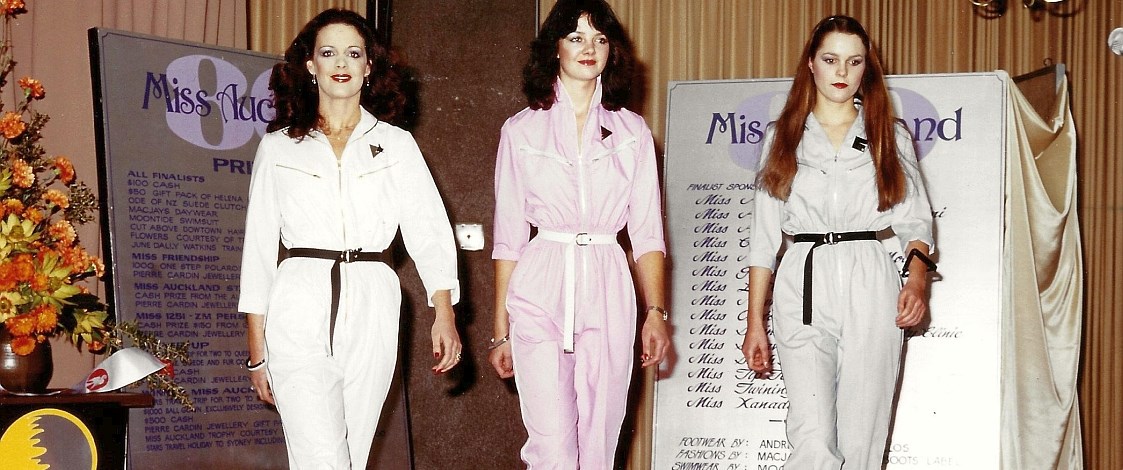
“The name was clearly a Kiwi thing,” says Justin Jones of Gumboots, one of the six fashion labels produced by Macjays, the company founded by his father Russell Jones and Andy Macdonald in 1976. “Dad had a power boat called Gumboots - he was a keen water skier - but I don’t know which came first, the label or the boat”.
Aucklanders Russell and Andy met when both were employed by Holeproof Mills Limited - Andy as sales manager and Russell as merchandise manager. Taking the Mac from Andy Mac and the Jay from Russell J they established Macjays Clothing Co Ltd, initially as a CMT (cut, make and trim) operation for other fashion manufacturers.
It wasn’t long, however, before they began producing their own labels - the eponymous Macjays, a mix and match range of casual co-ordinates, followed in 1978 by the more trend-driven Gumboots. Apparel magazine, which sometimes referred to Russell and Andy as ‘the Gumboots Boys’, described Gumboots as "a label with a real Kiwi ring but a far cry from the farmyard scene".
From the outset, the partners’ roles were clearly defined. Russell handled the company’s apparel design and administration, Andy warehousing and sales.
In 1980, having outgrown their original premises in Ben Lomond Crescent, Pakuranga, Andy and Russell relocated to a newly constructed 5,000 sq. ft building in Cascades Road, just around the corner. Here, they were able to accommodate an additional 25m cutting table with an automatic laying up machine, necessitated by the company’s ever increasing output. They also opened a showroom in Durham Lane in the inner city.
Early on, Macjays gained a reputation for the cut, fit and fabrication of their pants. Their standard, belted, straight-leg pant became a classic and remained popular for decades. It was supplemented over the years by flares, baggies, casual cords, pedal pushers, pleated styles, knickerbockers, culottes and jodhpurs. The styles varied from season to season but the excellent cut remained constant.
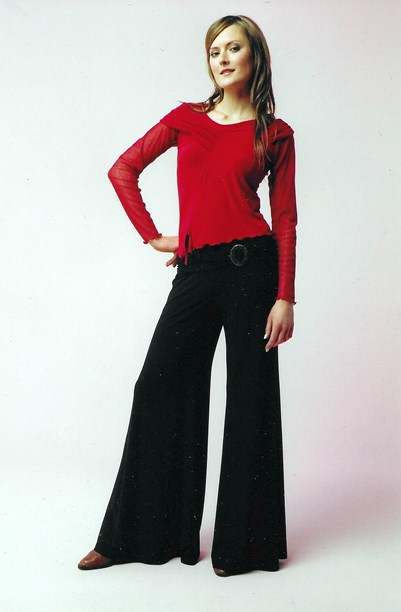
Flared pant and knit top with sheer sleeves. Hyper label by Macjays, 1990s. Model: Melissa Jones.
The company gained good exposure through its participation in the New Zealand Fashion Fairs, held bi-annually in Auckland from the mid-1970s until the mid-1980s. The apparel industry’s major trade event, the Fairs attracted up to 60 companies who, over a three-day period, presented their indent and in-season ranges to retailers from around the country via fashion parades and individual displays. In 1982, a special award - a Certificate of Achievement for Best Fashion Direction - was presented for the first time. The recipient - Macjays Clothing Company.
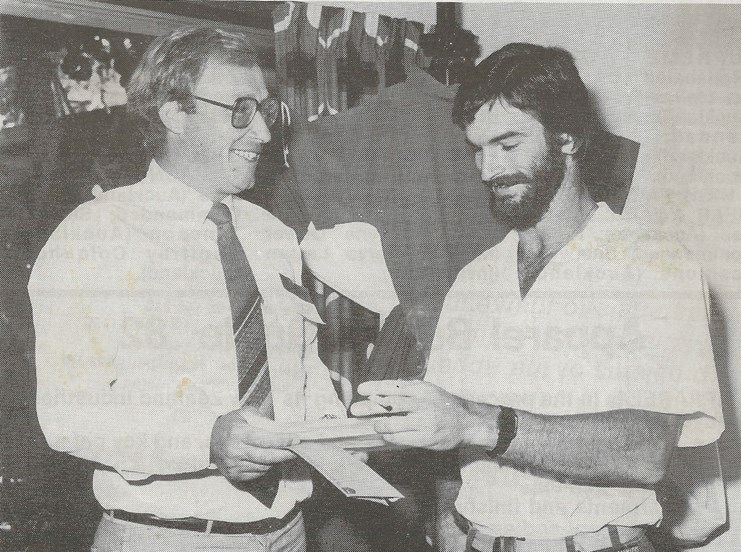
Andy Macdonald (left) and Russell Jones (right) with Certificate of Achievement Award, New Zealand Fashion Fair, Auckland 1982.
Sponsorship of Miss Auckland events in the early 1980s also helped build public awareness of the brand. Macjays supplied garments for the contestants to wear in fashion parades and daywear as part of the prize for the 15 finalists.
1984 saw the introduction of another new label. Dressy and sophisticated with an urban edge, Closed was aimed at the 25 to 40 year-old market but proved popular with younger age groups as well. The first collection, just 15 styles in all, sold out almost immediately it was launched.
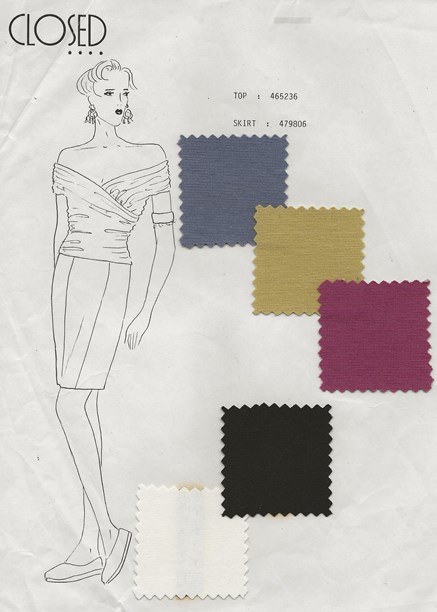
Sketches and swatches for ruched top and panelled skirt. Closed label by Macjays, 1980s.
Macjays prided themselves on keeping up with the trends - jumpsuits, the return of the mini, city shorts, military and jungle looks, aviator adaptations. In 1982, the Year of the Knickerbocker, Gumboots customers were offered a choice of knickerbockers in canvas, cord, leather-look fabrics, wool, tinsel georgette and velvet.
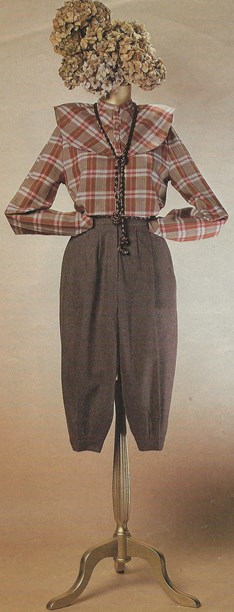
Gumboots french brown wool knickerbockers and yarn-dyed check shirt. 'City Girl' magazine, 1982.
A Hard Times/Depression Era look, popular in the UK in 1985, was interpreted for the Gumboots label in a collection of bibbed or braced baggy pants, straight-as-a-die, mid-calf length skirts, coarse knits, asymmetric hem big jackets and over-sized shirts with pockets conveniently located at fingertip level. Fashion Quarterly featured pieces from the range in a fashion editorial shot on the platform at Newmarket Railway Station. Accessorised with lace-up shoes, battered cardboard suitcases and socks scrunched around the ankles, the look was described as one ‘that suggests dole-queues, soup kitchens, life on the wrong side of the tracks”.
In addition to Fashion Quarterly, extensive media coverage of the Macjays labels was provided by Charlie and City Girl, Cleo and New Idea, More, More Fashion and Simply You. The televised Corbans (later Wella) Fashion Collections and the manufacturers’ showcase in the Benson & Hedges Fashion Design Awards, afforded the company further opportunities to promote the brand.
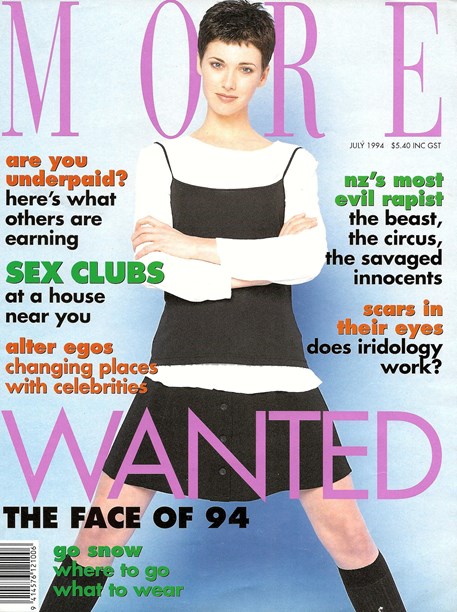
Cover shot of Hyper by Macjays crinkle georgette top, camisole and button-through flip skirt, 'More' magazine 1994.
Macjays enjoyed a long-standing relationship with local textile houses, Harrison Bergquist, Dawson Langstone, Palmer McLachlan, among others. Russell worked with them to source exclusive fabrics for the ranges and, for the collections he developed around his own fabric ideas, he would commission fabrics to be made specially in Japan, Italy or Hong Kong.
Twice yearly, he travelled overseas to gauge the fabric and fashion trends for the next two seasons. From the early-1980s through to 1994, he was accompanied on his travels by Lisa Blair (now Januszkiewicz). Lisa, who shared the responsibility for garment design and production in conjunction with Russell, began with the company as a part-time junior machinist while studying at the New Zealand College of Fashion Design. Macjays’ corporate wardrobe department, which made uniforms for schools, city councils, national banking organisations and an international corporation, also came under her jurisdiction, as did the co-ordination of photo shoots and fashion parades.
By the time Lisa arrived at Macjays, the company had moved again, to Graham Street in the vicinity of the Victoria Park Market. She remembers the building as “a massive metal factory space, internally two and a half storeys high, with no windows and a large mezzanine which was the design department. You could look down from the design area to the vast cutting, finishing and pressing floor below. The showroom had a 70s’ nightclub look and feel, with flocked red and black wallpaper and red leather curved booths”.
While Lisa quit the fashion industry after leaving Macjays, Karen Walker and Paul Chaplin, who began their careers there as pattern-makers, went on to launch their own labels. Felicity Gray, a graduate of the design department, moved to London where she worked for Jasper Conran, British Designer of the Year in 1984.
Gumboots was eventually dropped and replaced by Hyper, a new label catering to the tastes of the fashion-savvy girl-about-town. Two other labels, Allure, which focused on softer, more fluid styling, and Apres, a range of colourful no-fuss casuals, were added at a later date.
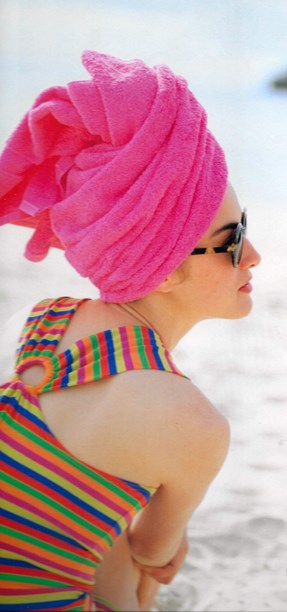
Hyper by Macjays striped knit dress. 'More Fashion' magazine, 1980s.
In November 1989, Andy was pictured on the front page of the Auckland Star, standing in an empty factory. Unable to access fabric, trapped in containers on the wharf due to a major ports dispute, production had come to an end. The factory was temporarily closed and over 20 workers faced redundancy but by December the cloth started rolling again and work resumed.
With Macjays expansion into the Australian and South Pacific markets in the 1990s, the number of retail outlets stocking their labels rose to 300. Mid-decade, the company down-sized to smaller premises in New North Road, Kingsland and out-sourced its production while cutting, pressing and ticketing remained in-house. By 2005 production was being moved offshore.
Apparel magazine attributed the success of the Macjays labels to the partners’ understanding of the market sectors they targeted. Within a 40-year period, they created six diverse labels. In all probability, though, it is the Macjays label, defined by its popular pants, for which they are best remembered.

Macjays pants promotion, 2011.
The business was wound up following the death of Russell Jones in 2018, Andy Macdonald having died six years earlier. Another company bought the rights to the Macjays name and uses it today for its own range of clothing.
Text by Cecilie Geary. Banner image: 1980 Miss Auckland contestants model jumpsuits by Macjays.